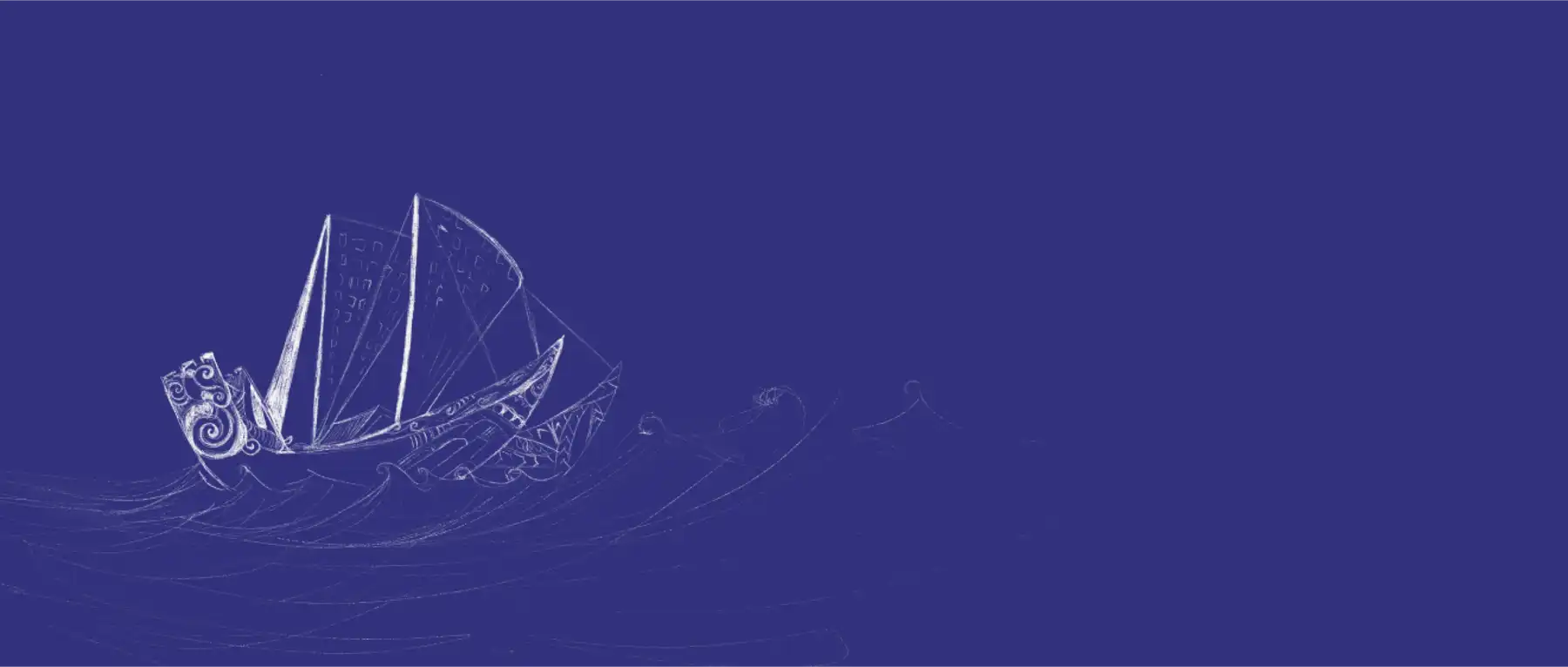
Over the past few years I have been privileged to explore what it means to be a Māori designer. Being taught at design school and at university from a Western way of doing things, I find I am constantly walking the line of understanding how to straddle the two worlds. This article is my reflection of exploring this line, based on my own experiences with my whānau, friends, education and professional mahi.
Human-Centred Design is a practice that focuses on putting people at the heart of the product you are designing. Dating back as far as the 1960s, the methodology and mindset is generally what most people are trained in. The methodology focuses on humanising the design process by researching with your audience and stakeholders throughout the entire design process. From discovery to delivery, the people you are designing for are involved in the design. Human-Centred Design is at the heart of what we do at Springload and has been the foundation of my professional work for some time.
Alongside this, there is the British Double Diamond. This method provides two different modes of thinking; divergent and convergent moving through a series of phases of delivery. The method was founded in Britain by the Design Council to explain a design process.
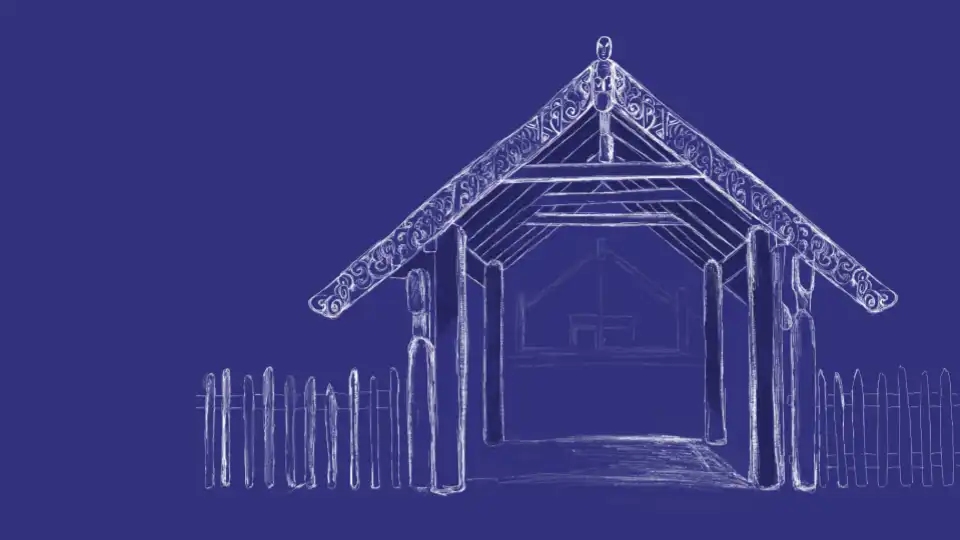
Over the past few years we have seen an increasing number of proposals for digital experiences that ask respondents to consider Te Tiriti in their solution and proposal. We’ve been asked to make our proposals “culturally authentic” or “culturally affirming”. Some requests also ask for te reo translations or a glimmer of te ao Māori graphical treatments. At best, this is tokenistic, a tick box exercise to meet the mark. At worst, it belittles people. That all of the knowledge we hold can just be an add-on.
How do I design for Māori? How do I design with Māori? How do I design in a way that is authentic, genuine and true to my culture?
It is clear that Human-Centred Design and the Double Diamond are no longer models that are fit for purpose in Aotearoa. Suddenly when thinking about these approaches, they didn’t feel like they represented our people nor did they drive partnership, but rather extraction. I realised, it is time to reimagine how we work as Māori or more importantly as Māori digital designers.
An indigenous way of being
Our culture is a holistic way of being. Our culture connects us to our spiritual and non-spiritual worlds, our taiao, our reo, our whakapapa, our tinana and everything in between.
For me, designing a product in a te ao Māori way, is about more than translating a website into te reo Māori. Reo Māori is one layer, one aspect of our culture. When I bring culture into my practice, I bring my whole self. It's not about me and my brain, it's about everything that comes with me.
When thinking about building a digital product in te ao Māori, I need to bring my whole self into the mahi. Te ao Māori should be part of the foundation of the mahi. It is about how I work and the values I hold and how I conceptualise and design the product. It's how to hold a conversation — how you interact with people on a daily basis, the spaces you occupy, the way you engage with people on the project, and especially how you conduct your research with our people. For a product or service we must consider every element of the experience. Every word (including how it is said and what the content is), every experience, every interaction, every mark, the fonts, and the graphics. All of these elements come together to evoke a feeling which transcends through your entire experience of the product.
When one designs with te ao Māori at the heart, and in the foundation and how you work and what you make, the result will be something that feels right for Māori, authentic to us and our way of being.
He aha te mea nui o te ao? He tangata he tangata he tangata!
What is the most important thing in the world? It is the people, the people, the people.
The people we partner with on a project will make a fundamental difference to the end result. Māori on the project team is critical. Ideally the project is by Māori for Māori. Our wairua and our spirit will glow through the project. You will see and feel how we intercept problems and how we guide you in your journey of discovering how to solve the problem in a way that connects with us.
The people in the community who support and guide you are your partners, not stakeholders. It is always obvious when engagement with Māori is a tick box exercise. Often our input is late in the project or the outcome has been predetermined before our input has happened. This often means the outcome doesn’t fully work for Māori.
Our voice needs to be at the heart of the project. In a partnership the contribution is equal and the benefits are equal. Both parties thrive in the project and in the outcome. The outcome is a direct result to help people. This sentiment is closer to Co-Design over Human-Centred Design. Where Human-Centred Design seeks to take information and give you in response, Co-Design done well puts the audience as the leader of the solution rather than the designer. We co-create the outcome together.
Remember that a partnership is not built over a discovery workshop. Sometimes a partnership is made with 1000 cups of tea. I was once given the advice to “build your bridge before you need it”. Forming strong partnerships through whakawhanaungatanga and manaakitanga to help navigate the rocky seas of making a culturally engaging solution is essential to everyone’s success.

Reimagining how we work
Putting the British Double Diamond to one side, we wanted a new way of thinking about our projects. A way that would help us to embody a kaupapa Māori approach to how we work and the products we made. Our kaimahi Māori at Springload spent time exploring what a new model might be. We explored many ideas and discovered that there are some fundamental aspects of being Māori that would need to be embodied in such a model.
Circular or non-linear thinking
The conceptualisation is time tends to have a cyclical nature. There is not a perfect starting point nor a perfect ending point. We move through a series of cycles that aid in the development of our thinking. Things are forever evolving, changing, developing.
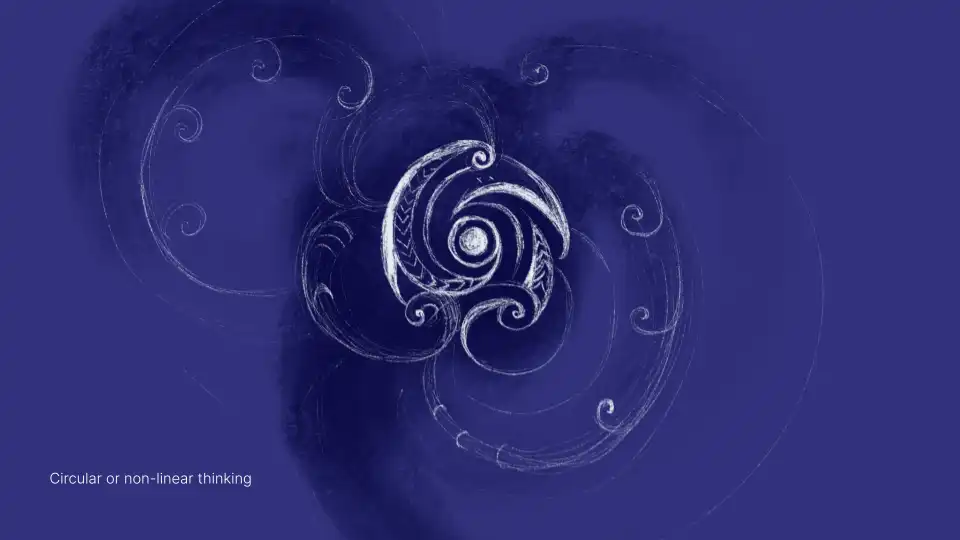
Ka mua, ka muri
Before we set out on our journey, we look to our ancestors, to our past, to our environment to understand where we need to go. We reflect on the world around us to help us to find the journey ahead.

Conceptual grounding
Te reo Māori is conceptual in nature compared with the dominant English language. Embedded in our language are ideas that help us describe the world around us. The conceptual ideas woven in our language are deep and broad. You see this when words in te reo Māori simply don’t translate to English, concepts such as whanaungatanga, mana, tapu, utu and kaitiakitanga. You may also notice when people describe things in Māori, the concepts are often profound, complex and deeply thoughtful.
Stories are also embedded and woven throughout the culture. Every object has its own whakapapa, every mark or object has its own story.
Strategic
Māori have their 500 year plan. In most cases, we are thinking about the long term. What will this decision mean for our mokopuna? We are now the ancestors of tomorrow. How will our actions drive the future we want our children to be a part of?
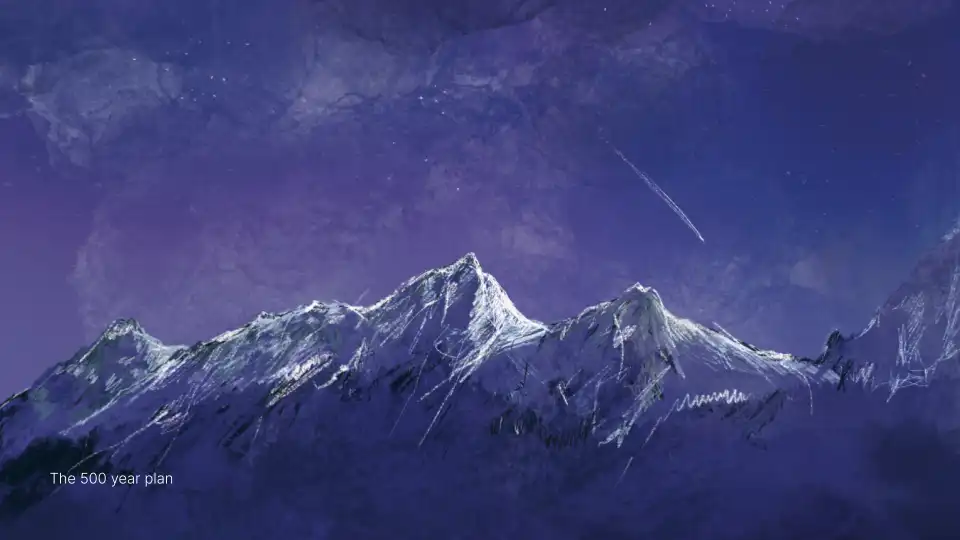
He waka eke noa
Māori society is fundamentally socio-centric, meaning that collective survival and group interests take precedence over that of the individual. On a project we move together as one in one waka. It means that sometimes things take longer, but that is the nature of how we are. When we are together as one, we go further than if we are alone.

The Aroha Model
Our Aroha model was gifted to us by our kaimahi Māori at Springload. It provides a holistic way to solve complex issues through a te ao Māori lens. It is guided by the interconnections and interrelationships between people, our environment, our genealogy and our future aspirations.
The journey begins with an exchange in te taiao (the physical and spiritual environment). At this part of our journey we will draw on the knowledge of our tūpuna, the mātauranga gifted to us, and the tikanga and values instilled in us, to make assessment, seek clarity, co-create and ideate to create pathways forward.
We will nurture these ideas until we reach a point of whakamāramatanga (understanding), then refine them into concepts that inform how we approach whakatinana (embodiment). This will allow our creation to take shape.
Throughout this process, we uplift the mauri (life force) and wairua (spirit) of our goals and aspirations as we seek out work towards our future state, with hā (breath) encapsulating everything we co-create. At each stage, we will look back on the journey and the whakapapa that has been created.

Cultural foundation
At the base of our mahi, supporting the aroha model is our cultural foundation. When describing a digital design process, we typically refer to this diagram (see image below) made up of the desirability (our people), the feasibility (technology) and the viability (business). We realised this diagram is missing a key element — the cultural foundation.
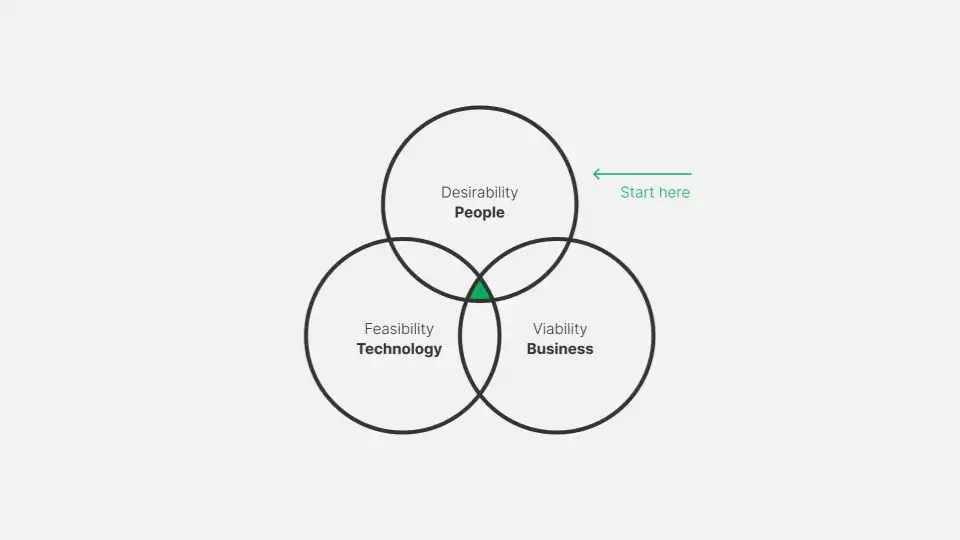
When you put a cultural foundation into your mahi the overall result is that the work feels authentic and genuine. Culture is everything. It is about how we interact with one another on the project and the products we make.
Having a cultural foundation means we focus on partnership, on whakawhanaungatanga and manaakitanga right from the start of the project. We begin with a clear intention, our why for the project and then build a narrative structure that will flow throughout the product we are making. This narrative structure is a place to tell our stories and weave a conceptual grounding to the product. In theory, the narrative would then be felt when experiencing the design, woven through every mark, every interaction and every word.
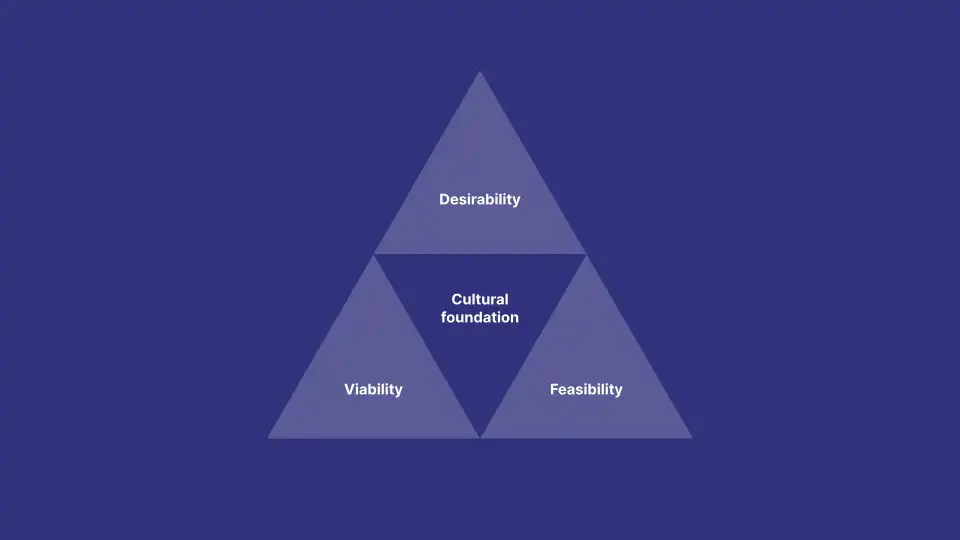
Conclusion
We are only at the start of our journey in understanding how to replace Human-Centred Design with a model for Aotearoa. Many across the globe are starting to think about equity-centred design to reshape and reform how we work.
Together we can build a new way of imagining our future that helps to rebuild the past we have come from and shape a future that we are proud to have our mokopuna be a part of.
Get in touch
Let’s make the things that matter, better.
Email: hello@springload.co.nz
Phone: +64 4 801 8205